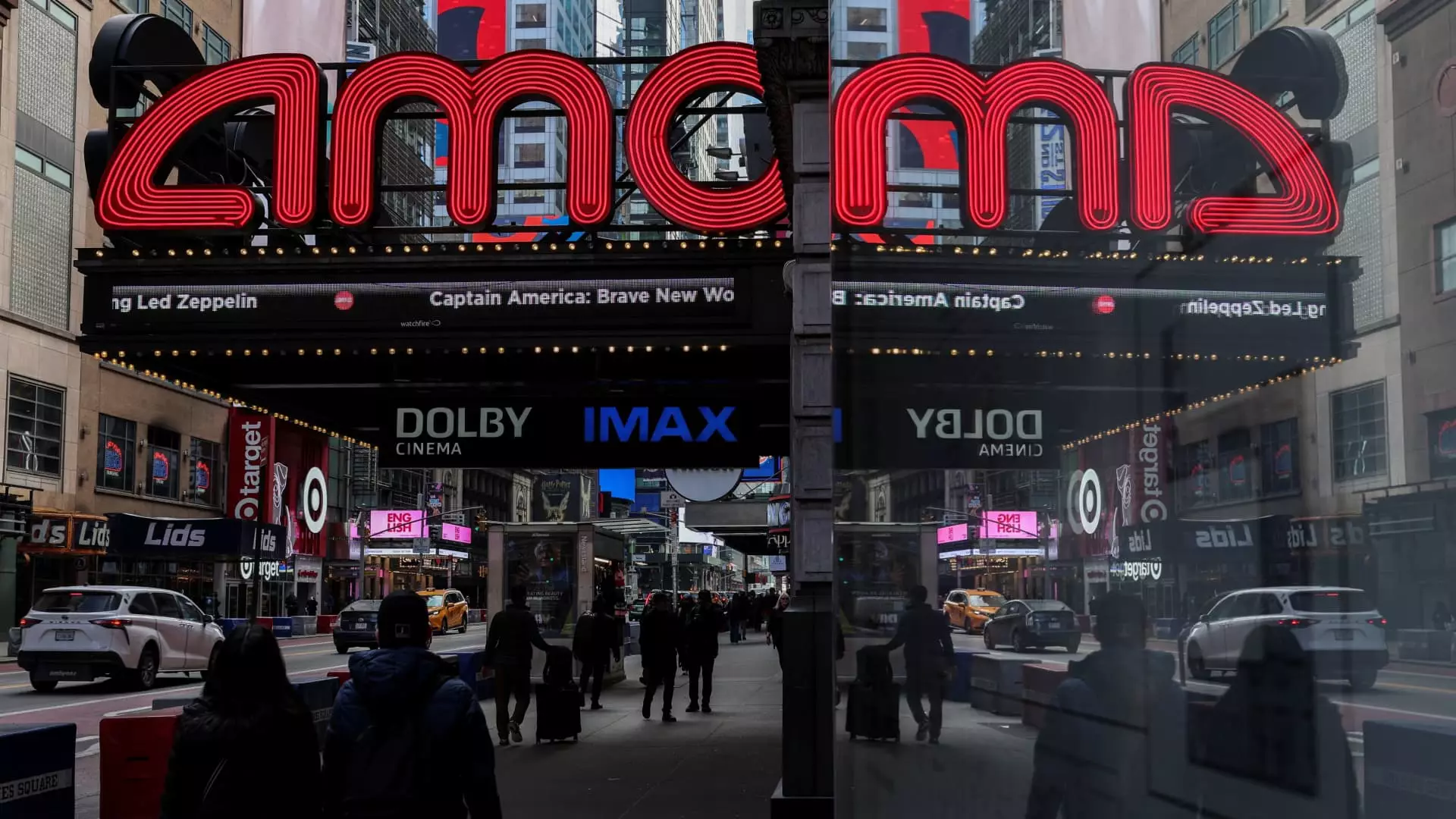As we navigate through the ever-evolving landscape of entertainment, the cinematic experience has entered a renaissance marked by innovation and elevated expectations. Hollywood, long renowned for its blockbuster spectacles, seems to be in a constant race to captivate audiences more profoundly. Enter AMC Entertainment, the giant of cinema chains, which is boldly expanding its premium screen offerings with plans to introduce 40 additional Dolby Cinema theaters across the United States by 2027. This strategic move is not merely a response to current demand but a calculated effort to define the future of moviegoing.
Kevin Yeaman, the president and CEO of Dolby Laboratories, aptly highlights the significance of this expansion: “Premium moviegoing is defining the modern box office.” As audiences yearn for experiences that transport them beyond the mundane, it becomes clear that the allure of Dolby Cinema’s immersive qualities—combining stunning visuals with breathtaking audio—sets a new gold standard in entertainment. However, one must wonder if this relentless focus on premium options alienates those who appreciate the simplicity of traditional cinema.
Rising Ticket Prices: A Double-Edged Sword
AMC’s strategy reflects a broader trend within the industry where cinema chains are experimenting with premium large format (PLF) screens to cater to a changing audience landscape. Elevated viewing experiences often carry a hefty price tag, with average premium ticket prices hovering just below $17. While this is undoubtedly an attractive offer for film enthusiasts seeking spectacle, it raises concerns about accessibility. Not every moviegoer can afford this luxury, and as the cost of experiencing Hollywood’s grand narratives rises, it risks leaving behind a significant portion of its audience.
By embracing such high-end formats, AMC boldly positions itself as a purveyor of elite cinematic experiences, yet this approach may inadvertently contribute to the financial alienation of the average consumer. The notable 33% growth in PLF box office receipts over five years is impressive, but it also reinforces the widening gap between those who can indulge and those who cannot. In the pursuit of premiumization, will we lose the inclusivity that has long been a hallmark of community cinema?
Innovations in Theatrical Offerings
AMC’s partnership with CJ 4DPLEX to incorporate cutting-edge features like Screen X auditoriums and 4DX theaters underscores a profound commitment to innovation. In an era when the traditional art of storytelling vies for attention amidst an onslaught of distractions, the implementation of multisensory experiences—such as gyroscopic seating and environmental effects—offers a compelling, albeit extravagant, avenue for engagement. Films like “Oppenheimer” and “Dune,” which thrive on grandiosity, particularly shine in these settings, prompting discussions around the types of narratives that thrive in premium theaters.
While these enhancements invigorate the conventional viewing experience, one must critically assess their implications on storytelling itself. Are exhilarating visuals and adrenaline-inducing effects merely a crutch for weaker narratives? In a cinematic age increasingly dependent on visuals and spectacle, we should encourage filmmakers to balance creative ingenuity with rich storytelling—an equilibrium that doesn’t rely solely on technological marvels.
A Cultural Shift in Film Consumption
The impressive rise of PLF cinema underscores a cultural shift in how we consume films. This shift aligns closely with trends in consumer quality; viewers no longer desire just entertainment but seek transformative experiences tied to a larger emotional impact. Yet this brings forth a vital question: Are we fostering genuine artistry or merely crafting elaborate spectacles that cater to the senses?
Hollywood’s exciting line-up featuring franchises like “Avatar,” “Star Wars,” and the Marvel Cinematic Universe amplifies the stakes even further. As audiences clamor for blockbuster releases, the art of cinema risks being overshadowed by the promise of visual extravagance. The significant revenues generated from PLF formats illustrate the monetary allure of these experiences, but the community aspect of film—gathering in a shared space, discussing narratives, and engaging with film as an art form—may diminish in the shadows of gleaming screens.
The advent of premium formats ignites an opportunity for transformation within the cinematic landscape, yet it also beckons a reminder of the importance of narrative depth. The rising tide of technologically enhanced experiences must not eclipse the very essence that makes cinema a powerful medium for telling our stories. As AMC embraces this shift towards premiumization, the challenge lies in ensuring that the lure of spectacle does not drown out the whispers of meaningful storytelling, preserving cinema not just as an entertainment medium, but as an art form that communicates a deeper human experience.


Leave a Reply